What do you know about rubber powder? Tires are an important element in human life today, the number of which is increasing every day, given that more than 200,000 tons of tires are produced annually in Iran and the decommissioning of worn-out cars, which in itself causes an increase in worn tires. , If the right decision is not made about its recycling, it will become one of the biggest environmental problems.
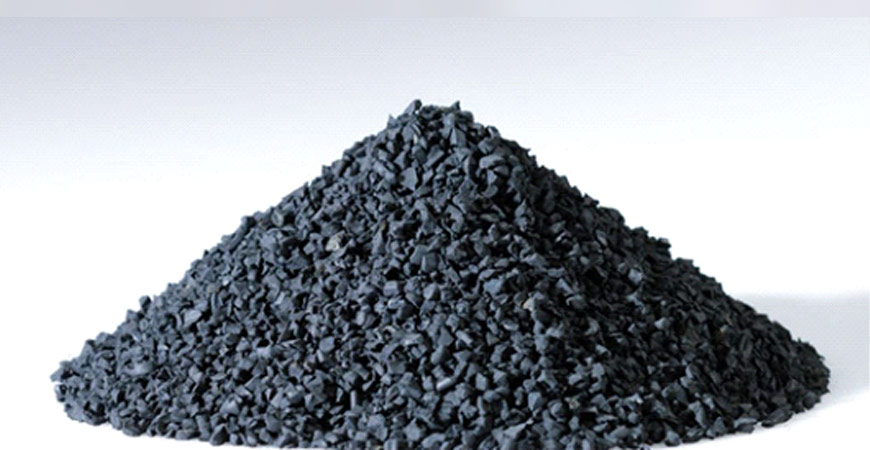
What is Tire Powder? Tire recycling generally refers to the process by which car tires that are no longer considered worn out or unusable due to rupture and breakdown are re-introduced into the production cycle. These tires are among the biggest waste that are very problematic. The reason for this problem is due to the durability of rubber and its high production volume.
What is rubber powder?
Used tires are special wastes and are chemically different in size, shape and shape from other wastes. Rubbers are made of polymeric materials that do not decompose easily in nature. In many cases, unused tires pile up in the form of a mountain of rubbish, creating ugly scenery and a risk of fire.
Disposal of used car tires has become a major environmental problem. Especially in densely populated countries that use motor vehicles as the main means of transportation, waste tires must be recycled to solve this problem.
Burning tires creates harmful black smoke that pollutes the air. Burying burnt tires is also very harmful. Therefore, it is still the best way to recycle tires. Due to the fact that no cost is received from waste producers in Iran, there is no equipment in landfills to reduce the volume or crush the tires, and as a result they are buried in the same original form, which causes a large volume of landfills to be occupied. Today, the results of research and studies show that the recycling of worn tires not only does not have harmful effects on the environment and solves the management problems of this sector, but also is the source of industrial development and economic profitability and processing and production of other products and can be obtained from rubber powder. Recycled worn tires benefited in many industries.
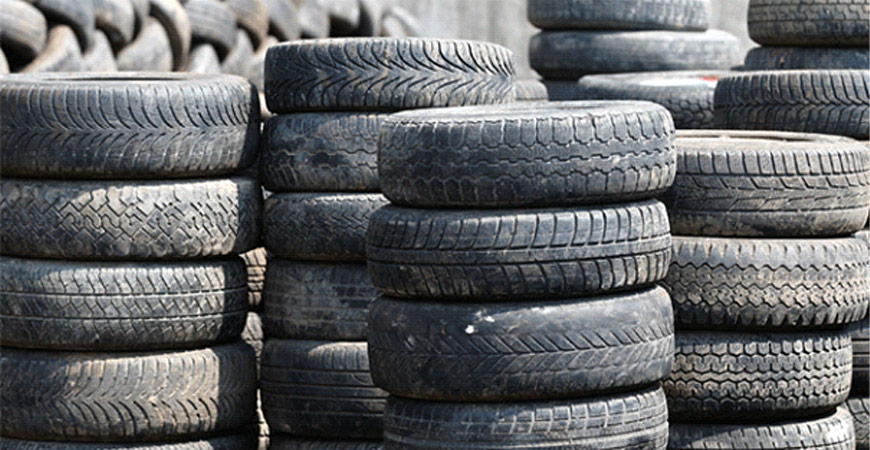
Rubber Powder: How are tires recycled?
A Rubber Recycling Factory consists of two parts:
1-mechanical rubber recycling
A- Production of rubber powder and production of granules
In this system, first the rubber crown wire (tire) is removed by the wiring devices, then the tire without crown is guided to the crushing machine by the conveyor belt. The rubber parts taken out of the shredder are guided to the secondary shredder by a conveyor belt and are crushed into one centimeter pieces. In the next step, after passing through the magnet, the metal wire is separated from the tire tissue.
Then the fiber separation operation is performed by sieve and cyclone. And then the materials enter the final mills which will be in the form of granules and rubber powder. At this stage, the exact operation of separating the fibers and metal wire from the rubber powder is done and finally the above product is packaged.
Rubber recycling products:
- Steel wire: 10% of each kilogram of tire
- Polyamide yarn: 3% per kg of tire
- Granules: 85% per kilogram of tire
B - Production of rubber flooring (granular flooring)
In the production stage of flooring, rubber granules with polyurethane adhesive and paint in mixers, mixed at specific times and with special formulas, and then the resulting mixture with a specific mass (thickness of flooring produced) is poured into existing molds and in They are hot pressed and baked at a certain pressure and temperature. Finally, the presses are unloaded and the product is sent to the warehouse.
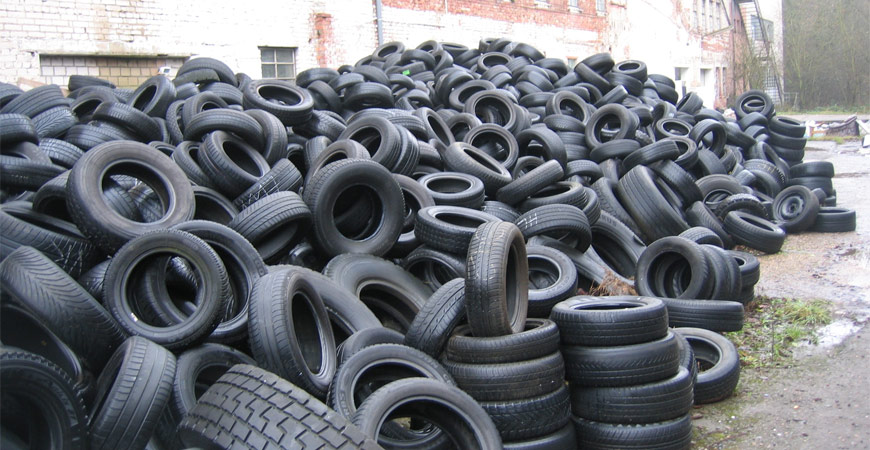
2-Chemical recycling of rubber
In the chemical method, either the tire is burned and the remaining coal and metal wires are used or the tire is pyrolyzed. In the pyrolysis method, the tire is burned in a vacuum, in which products such as fuel (such as diesel), oil, etc. are extracted. It should be noted that the chemical method also uses crushed tires, pieces of rubber known as crumb.
Tire pyrolysis is the process by which crushed tire tires are subjected to a vacuum heating process and then the resulting hydrocarbon vapor is distilled into condensers to become the main pyrolysis fuel of diesel fuel.
What are the uses of rubber powder?
1-Road construction industries (covering the road surface instead of asphalt)
Due to its acoustic properties, rubber powder has a longer life and lower cost, and it produces less noise and is less cracked and does not melt in heat. Car brakes perform better on it. Gap sealing of the road surface, production of waterproof and absorbent layers, creating traffic signs and shock absorbers with lower cost and longer life are other advantages of using rubber powder in the road construction industry and due to its elasticity during accidents, less damage to equipment. The vehicle enters.
2-construction industry
As foundations and foundations, the use of rubber powder in civil works is of great importance, especially in cases where reducing the weight of structures is necessary. Adding rubber powder to concrete increases its fire resistance and prevents it from breaking. In industrial flooring and passageways, the useful life is 20 years and due to their biomechanical properties and semi-elastic state, they cause less fatigue. Roofing of buildings and building insulation, production of adhesive sealants, air ducts, carpets, covering the surface of children's playground are other applications of rubber powder in the construction industry.
3-Rubber and plastics industries
Flexible foams, pool covers, conveyor belts
4-Automotive industry
Production of tires, tire coatings, car floors and fenders, car door and glass strips, all kinds of gaskets, friction brake systems, car shock bumpers and…
5-Marine industries
Shock absorbers and berths, naval vessels, non-slip floors.
6-In different sports
Coverage of athletics, golf and tennis, horse racing and …
7-Agricultural, livestock and water supply industries
Other applications of rubber powder in agricultural water supply systems and rubber hoses, rubber pots, feed containers, various types of grain silo fences and the use of rubber flooring with an air duct in which water penetrates.

Types of sizing in rubber powder
Rubber powder is divided into 3 general categories based on particle size:
- Rubber powder contains particles with a size of less than 1 mm, which includes several meshes, some of which are mentioned.
- Mesh 24 rubber powder (particle size less than 0.7 mm) is the most suitable size for the production of rubber bitumen, rubber asphalt as well as reclaimed rubber.
- Mesh 30 rubber powder (particle size less than 0.5 mm) is used in the production of rubber parts, including auto parts, as well as for the production of conveyors and reclamation rubber.
- Rubber powder No. 3 (grain size from 1 to 3 mm) is used for rubber floor coverings as well as for spraying on artificial grass.
- Rubber powder No. 5 (grain size from 3 to 5 mm) is recycled in the production of parts and types of press tires and is mostly used in parks, children's playgrounds, corridors, sports fields and track and field fields. Is used.
- I hope I have been able to guide you in the field of rubber recycling, rubber powder production, applications and products made from rubber powder to the desired level.
Conclusion
New technologies and new laboratory techniques have made the materials obtained from rubber and plastic recycling of considerable quality. This quality is such that the products produced from its recycled materials, along with the first products, with the same standard and characteristics, play their role well.
Tire recycling is the process by which car tires that are no longer considered worn out or unusable due to rupture or damage are recycled. These tires are among the biggest waste that are very problematic. The reason for this problem is due to the continuity and durability of the tire and its high production volume.
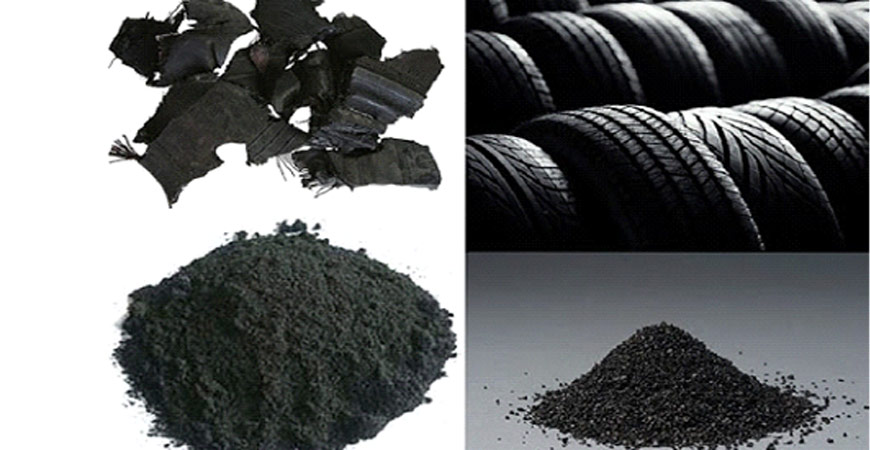
Cheap access, high aggregation and high strength make tires a good target for recycling. However, more than half of worn tires are burned for fuel value only. Almost every year, one tire is thrown away for every person in the world. Tires are often recycled for use on sports fields such as basketball courts and track and field, new products in the shoe industry, and artificial flooring and turf. It should be noted that the initial recycling of tires produces a material called crumb, which is used as a cheap filler in various industries and is often produced on a small scale.
Although tires are more likely to be burned than recycled, many valuation efforts are underway today to recycle them. Tires can be recycled into various products, including hot asphalt, in which pieces of rubber called crumb rubber are added to the asphalt.
This improves the properties of asphalt and turns it into polymer asphalt, which makes the asphalt more durable and does not crack quickly. Recycled rubber is also used in Portland concrete cements. On the other hand, worn tires can be used to make new tires. In some cases, the recycled tire itself is used as a water retainer or material in horticulture and to prevent the growth of weeds. Other products made from recycled rubber materials include granular flooring and artificial turf.

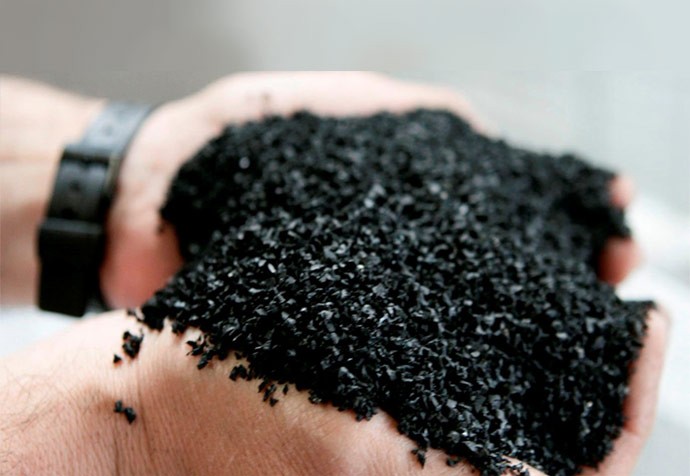
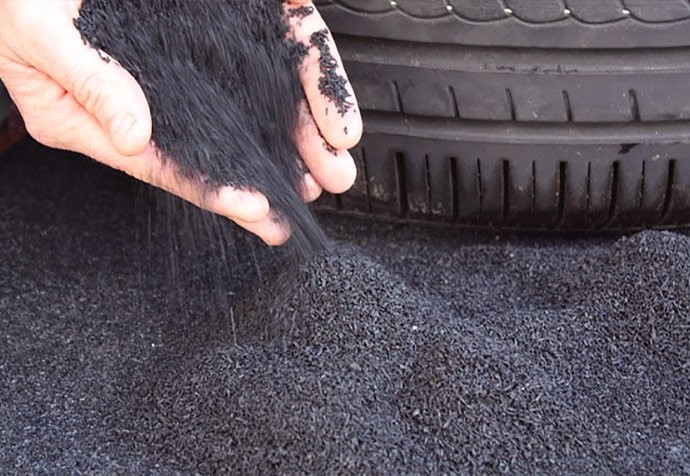

0comment